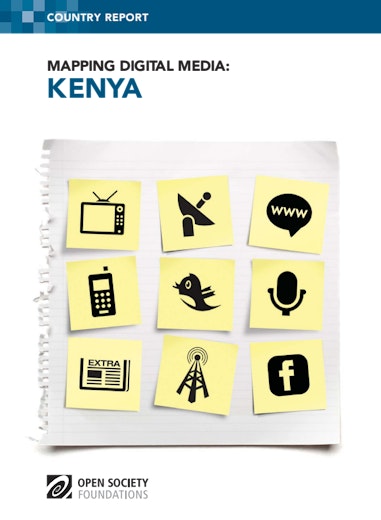The Mapping Digital Media project examines the global opportunities and risks created by the transition from traditional to digital media. Covering 60 countries, the project examines how these changes affect the core democratic service that any media system should provide: news about political, economic, and social affairs.
The new constitution of Kenya, promulgated in August 2010, is considered a major positive development in ensuring the free flow of information. It provides for freedom of media as a right and fundamental freedom. Section 34 guarantees the independence of electronic, print, and all other types of media. The government has also pledged to enhance Kenya’s technological infrastructure by investing in the roll-out of fiber optic cable throughout the country and working on “digital villages” to enable people in remote parts of the country to access broadband internet. Stiff competition in the mobile phone market has also lowered access costs and there is a significant increase in news diversity as a direct result of the convergence of internet, television, and radio on mobile platforms.
In online journalism, the virtues associated with ethics—accuracy, honesty, truth, impartiality, fairness, balance, respect for autonomy of ordinary people—are barely respected, largely because there is no effective way of policing this, and there are no legal penalties. Concentration of ownership has increased in the last five years and transparency in ownership of media has improved only slightly over the past five years. The government controls media licensing—a process that is shrouded in secrecy, so that it is difficult to establish who owns which media house.
The overall framework of policy and law is not yet adequate for digitized media in Kenya. The national ICT policy of 2006 committed the government to support and encourage pluralism and diversity. While this led to a proliferation of channels, it did not do much for content diversity due to the level of concentration of media. A lack of resources to build the digital infrastructure, consumer ignorance of what the switch means and whether the public can afford the end-user devices are some of the challenges faced in Kenya’s digital switchover.
